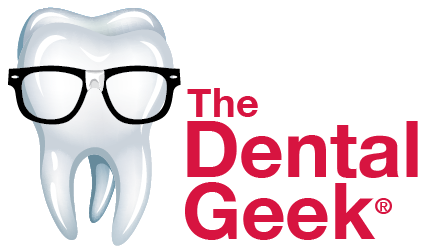Interview with Nikos Soukos, DDS, PhD, Scientific Founder of PhotOral
The Dental Geek recently had the opportunity to conduct an exclusive dental industry interview with Nikos Soukos, DDS, PhD, the founder and director of the Applied Molecular Photomedicine Laboratory of The Forsyth Institute, and a faculty member at Harvard Medical School and Northeastern University.
Dr. Soukos is also the scientific founder of a Boston-based life science startup named PhotOral, which has licensed the patented technology from The Forsyth Institute in Cambridge, MA to develop an intraoral light device for targeting and obliterating dental plaque pathogenic microorganisms.
Q: Dr. Soukos, this technology sounds very promising. What is blue light, and how does it kill oral bacteria?
A: Blue light is a portion of the spectrum that makes up white light (or visible electromagnetic radiation). The other portions of the light spectrum are violet, indigo, green, yellow, orange and red.
Some potentially harmful dental plaque microorganisms that are involved in the development of periodontal diseases (gingivitis, periodontitis), such as Porphyromonas gingivalis and Prevotella intermedia, produce and accumulate compounds (porphyrins) that are sensitive to light.
When exposed to various wavelengths of blue light, a percentage of these bacteria can be eradicated within a few seconds. Therefore, blue light could be used as a targeted antimicrobial method to control growth within the dental plaque environment.
Q: A lot of new technologies are called game-changers; do you think this will be the case with the blue light dental therapy device when it is introduced to the market?
A: The use of an intraoral light device with selective antimicrobial action for the restoration and maintenance of the homeostatic balance of oral microorganisms is a novel concept that may lead to a new generation of oral care products.
Q: The prevalence of periodontal disease within the US population has been underestimated, with new data suggesting that 50% of Americans have undiagnosed or untreated periodontal disease. Do you believe blue light dental therapy may have a positive impact in reversing these statistics?
A: Daily and short exposures of periodontal pockets to blue light in human subjects with gingivitis and periodontitis may lead to a cumulative suppressive effect of photosensitive dental plaque pathogens.
This may have an impact on the reduction of bleeding in gingivitis and the reduction of inflammation in periodontitis. In both cases, exposure to blue light may result in the gradual suppression of pathogens, which will lead to a shift of the microbial composition towards a new one associated with health.
Our studies also introduce new research paths, where blue light could be used prophylactically.
Q: Can this be considered disruptive technology that will make toothbrushes and dental floss obsolete?
A: Our intraoral light device is introduced as an adjunct to regular oral hygiene.
Q: How far along are you in regard to product development? When do you expect to launch?
A: The goal of PhotOralâ„¢ is to have the first intraoral light cleaning device available by late 2012.
Q: Will there be professional and consumer versions of this blue light dental therapy device?
A: There will be a consumer version of the device, whose use will be recommended by dental practitioners, specialists and oral hygienists.
Q: Are there any other future non-dental applications for blue light therapy under development? In dermatology or surgery, for example.
A: I am not aware of any non-dental applications for blue light therapy. However, violet light with peaks at 405 and 420 nanometers has also been used for eradication of Propionibacterium acnes, the gram-positive species that causes acne. A significant improvement in inflammatory lesions of patients with acne vulgaris after exposure to violet light has been demonstrated.
Q: How can Dental Geek readers stay up to date on the progress of your blue light dental therapy device and when it will be available?
A: Readers can visit our company’s website at www.photoral.com for the latest news.
PhotOral’s Blue-light technology will be introduced at the upcoming Yankee Dental Meeting and can be found inside the High Tech Playground, booth #2634.


Leave a Reply